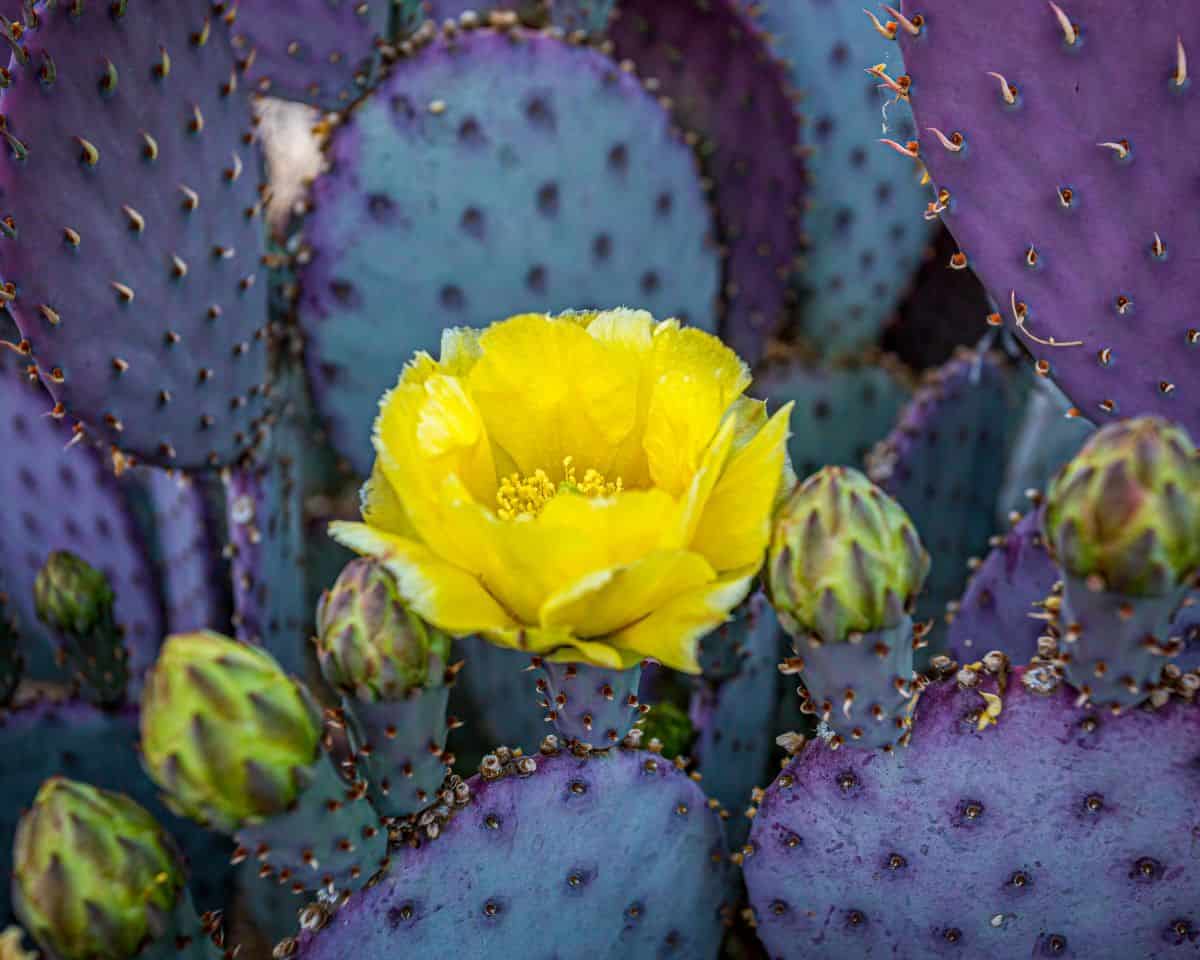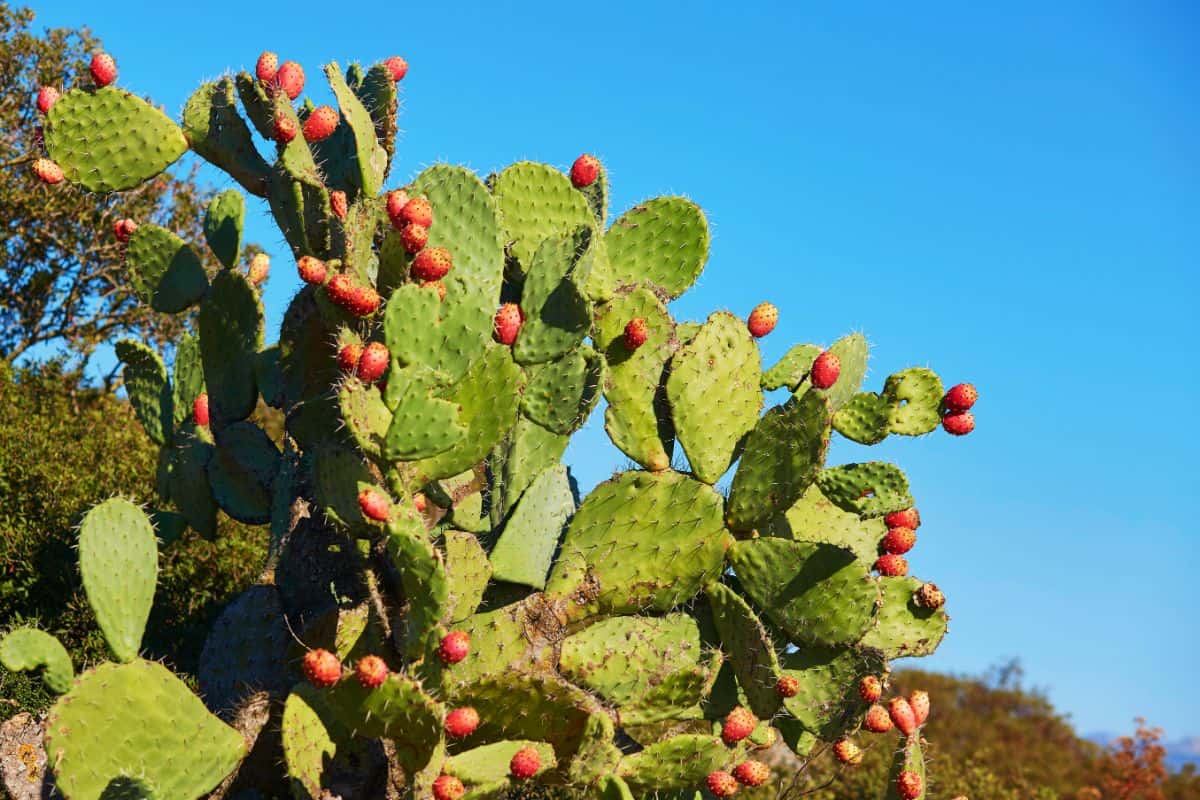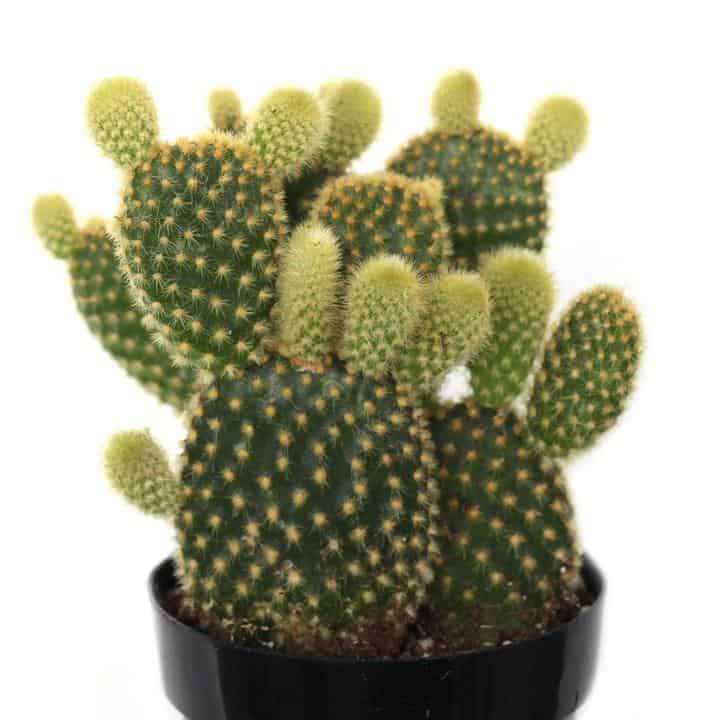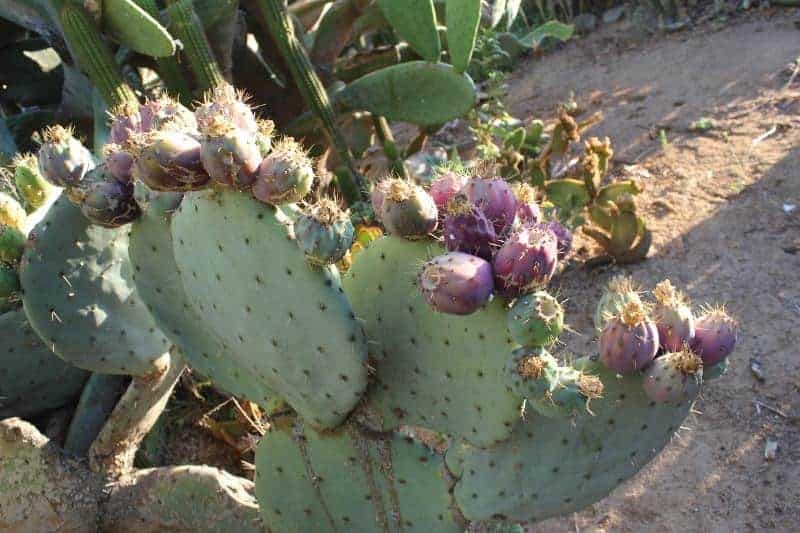Almost everyone knows the Opuntia Cactus by its more common nickname “Prickly Pear”. The purple prickly pear, barbary fig, beavertail pear, and bunny ears are all varieties of Opuntia.

Some of the main characteristics of Opuntia include:
- jointed stems
- flattened pads
- needles
- occasional budding flower
- needles or spines are detachable
These cacti grow throughout North and South America and prefer arid, desert climates.
So, what do you need to know to grow one? Different species of Opuntia thankfully have similar requirements to grow and thrive in any home garden.
| Name: | Opuntia |
| Soil: | Well-drained soil |
| Blooming: | Mid to late May and can extend into July |
| Light: | Direct sunlight |
| Water: | Once a week, or whenever the soil becomes dry |
| Propagation: | Cuttings or pad |
Jump to:
Soil Requirements for the Opuntia Cactus

An Opuntia cactus, or prickly pear, needs a warm, dry area to live. Sometimes it’s okay to grow these plants outside during the summer, but most people will have to bring them in when during fall.
The specimen needs to move from the nursery pot to a new home with well-draining soil. If you need help with a soil mix, check out this article. The cacti will also grow in rock gardens as well, or places with few nutrients.
These low soil requirements are one of the main reasons why the prickly pear is so popular around the world. Even people who don’t have the time or money to get nutritious potting mix can still grow a healthy Opuntia cactus.
No products found.
Still, it’s recommended that gardeners try to use soil with some nutrients left. The cacti might be hardy, but they would still like some vitamin supplements!
How to Water an Opuntia Cactus
Once planted, the prickly pear should not be given water. The pad used to grow a new specimen needs to dry to form a callus. It is then placed in the new pot and will begin to develop roots.
You should only give it water when it can stand on its own. This might go against all your nurturing or parental instincts, but the cactus will thank you for it.
Sometimes this process can last for a few months and people grow impatient. It’s important not to overwater your cactus during this step because it could drown or fail to root.
Read Also: Aloe juvenna - Tiger Tooth Aloe
Once your Opuntia has roots, care is very simple. Continue to give it enough water to thoroughly drench the soil every couple of weeks. A pot with adequate drainage can help prevent this problem.
You wouldn’t want someone to force you to drink when you’re not thirsty, and these prickly pears are the same. They are drought-resistant and might rot from too much exposure to liquids.
Check Also: Sansevieria cylindrica - African Spear
How Much Sun to Give an Opuntia Cactus
They also like to shine in the sun and need the greatest amount of daylight possible to be happy and healthy. Direct sunlight is best for prickly pears. People in hot and dry climates can grow any version of the Opuntia Cactus outside.
All others might have better luck keeping their prickly pears inside near a window. Some owners have good luck transporting the plant from one window to another to follow the sun.
This way, the plant mimics the sunflower and is sure to always have a light on it.
How to Propagate the Opuntia Cactus
To propagate Opuntia, people typically use cuttings or a pad. As mentioned earlier, these need to be left to thoroughly dry for several days before planting since too much moisture leads to rot.
The pad will develop a callus where it was cut from the original plant. This scarring means it is time to break out a new pot and start planting!
It’s recommended that you wear gardening gloves and long sleeves to avoid being poked by the spines. Cactus spines aren’t called needles for no reason – they can become lodged in the skin and are sharp enough to go through the regular fabric.
Once the cutting or pad is planted, you just need to follow the basic watering instructions above and leave the plant alone. Many gardeners are nervous parents when the poor Opuntia Cactus just wants to be a moody teenager and have some space.
The same rules apply if you plant a seed instead of cutting. Rinse it first to make sure there is no more pulp clinging to it and then leave the seed to thoroughly dry.
You can plant it after a few days and then leave it to its own devices until it starts to sprout. Water sparingly afterward.
Where to Buy a Prickly Pear Cactus
Prickly pears or Opuntia Cactus are easy to come by in the United States and many countries in Latin America since they cover the cactus’s native territory. Most gardeners can find cuttings or partially grown prickly pears at gardening stores.
Others might find varieties online. In states in the Southwest like New Mexico, people can find the plants right outside their doorsteps.
Check out our friends at Leaf and Clay or Succulent Source to buy them online today!




Gwen
i just got this little succulent from safeway and the label says its an opuntia. it looks a little winkly and not much like other pictures of opuntia though.